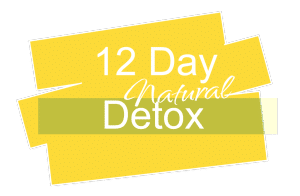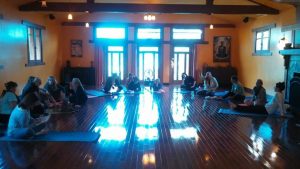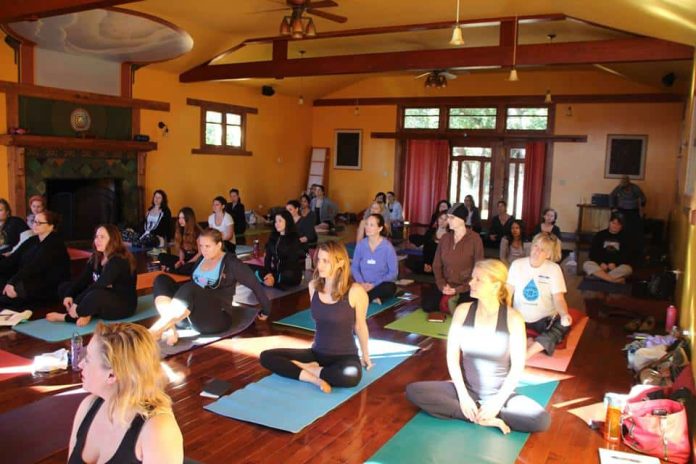As soon as one contraction ended, another began. The pain erupted from beneath my hip bones and a twisting, angry heat spread in all directions: up into my hardened belly, down to my bare legs, and out through my arms to my fingers, which were clenched into fists at my chin.
I asked the midwife, Renata, when I could have something, anything, for the pain. I had always expected that, when the time came, there would be some kind of medication. But labor rarely goes as planned, and in the moment – that wretched, unbearable moment – there was nothing safe for me to take. My baby girl was lying on her umbilical cord, and every time I had a contraction, her body and my body squeezed against the cord in a deadly embrace that pinched her only connection to oxygen. Drugs might have slowed, or even stopped, her natural impulse to breathe on her own once she was born.
Renata held my hand and rubbed my back. She pressed a cool cloth to my forehead, while I wondered if my child would survive. With each spasm, I filled my lungs and exhaled, over and over, like a surfer riding wave after wave.
I had learned how to breathe five years earlier, in a yoga class I signed up for after the World Trade Center towers burned and crumbled before our collective eyes. I had been a newspaper reporter then, writing stories about the people who died and the spouses and children they left behind. Quickly, the stories of loss had all become too much to bear. The images of people jumping from burning skyscrapers had taken my breath away. I wanted to go inward, to shut my eyes for a while. So I found a yoga studio, where the walls were the color of Nantucket hydrangeas and the candles smelled like lavender.
The teacher, Karen, was a petite woman with a soft voice and a graceful manner. She moved deliberately, with more awareness than I had ever seen in one person. Near the front of the studio classroom, I unrolled my mat alongside the other students and sat cross-legged, waiting for something I couldn’t name. Inner peace. Serenity. I didn’t know what.
The first thing Karen showed us was how to slow our breath by matching the lengths of our inhalations and our exhalations. Pranayama, she called it. Controlling the life force. It felt unnatural at first, but after a few moments, breathing seemed more like undulating – smooth and rhythmic, circular and endless. I could feel it and hear it. I could trust it.
I went back every Saturday, settled onto my mat and found that familiar pattern. We moved through the asanas, or poses. Some were challenging; others seemed nearly impossible. Just breathe, Karen reminded us. The trick was to keep a steady breath even when things got tough – when the room was hot, when our muscles were tired, when our minds were telling us to quit. Breathe in and out. Be full, then empty. Take it in and let it go.
I had the routine down pretty well by the time I arrived at the hospital, knowing that I was having contractions but somehow not equating the pain with actual labor. I was so in love with being pregnant, of holding my baby inside me, that I hadn’t thought about what life would be like after she was born, after she was really here. Her arrival took me by surprise.
There would be no epidural, no spinal block, not even a Tylenol or an Advil. Instead, Renata handed me an oxygen mask. Just breathe, she said. I slipped it over my mouth and focused on the one thing I could control: breath. My husband sat near my shoulders, whispering encouragements into my ear. Five hours later, Angela was born, red-faced but healthy.
I lost track of my pranayama later on, after my baby turned two and my marriage ended. Scared, deserted, I retreated to my hometown, in rural Maine. With two part-time jobs, a daughter who didn’t understand where her daddy had gone, and a car that broke down in the worst possible moments, there was no time or energy to go inward. There were dishes to wash, diapers to change, and divorce papers to fill out. My breath became choppy and frantic, more like gasps than graceful inhalations. Flashes of panic struck at unexpected times – in the kitchen, as I sliced apples for Angela’s snack, and in the bathroom, as I washed her hair in the tub before bed. I wanted to go to sleep and never wake up, and I might have, if not for this child who needed me. The doctor prescribed medication, which I took on the worst of days. Most of the time, I sat on the living room rug, cradling my forehead in my palms and waiting for the hopelessness to subside.
One day, while Angela was napping, I unrolled my yoga mat on the floor of our apartment, in the hallway near the front door, where the afternoon sun was as soft as buttercups. I sat cross-legged, then closed my eyes and took a deep breath. Warm air filled my chest, swirled behind my breastbone and gently lifted my heart. With each exhale, I started to let go of sadness. With each inhale, I began to feel strength. The slow, steadfast respiration was a reminder: I am breathing, I am alive, I have survived.
Two years later, I paid the last month’s rent on our apartment and sold most of our belongings. Like dandelion puffs in the wind, floating toward someplace more hopeful, Angela and I boarded a plane bound for southern California, a location completely different than the one we were used to. In Los Angeles, she started kindergarten, learned to swim, discovered dolphins. I found a new job, made friends, and fell in love. James and I married just before sunset on the winter solstice, a day for new beginnings.
Now, every Monday night, I sit on my mat in a yoga studio in North Hollywood. Angela, now eight years old, stays home with her stepdad, watching superhero cartoons on the couch, while I move through the familiar asanas – downward dog, warrior one, extended triangle. The studio is dimly lit, with walls the color of sage leaves and a statue of Lakshmi, the Hindu goddess of wisdom and grace.
Each class begins and ends with pranayama, the most important part of a yoga practice. The teacher, Joe, moves barefoot through the room, prompting us to focus only on the sensation of air moving into our nostrils, down our throats and into our chests. Just breathe, he says. Now and then, I lose track, as my mind wanders to work, to home, to the grocery list or the laundry, to the parent-teacher conference or the hum of traffic outside the studio doors. But I always find my way back, to this rhythm, to this impulse to breathe. It is the place I return to, time and again, when I’m scared, when I’m empty, when life hasn’t gone as planned. Deep breath in. Deep breath out. Take it in. Let it go.
When I get home from class, my daughter is already sleeping. She is curled into a ball, both fists tucked under her chin. I crawl beside her beneath the covers, slip my arm around her belly and feel the soft heat of her exhalations, the warmth of her toes on my bare shins. I stay for a minute maybe two, just breathing.
Wendy Fontaine is a mother, writer and professor in southern California. She holds a masters of fine arts degree from Antioch University Los Angeles. Her work has appeared in Readers Digest, Brain Child Magazine, Utne Reader, the Huffington Post, Role Reboot, Literary Mama, the Lindenwood Review and other international publications.


“Here’s the thing about Jen Pastiloff, folks. Here’s the revolutionary thing.
She listens.
She listens with an intent focus, a focus that follows your words inside you. Because she has hearing problems, she watches your lips as you speak, and she plucks the ash of your words from the air and takes it inside herself and lays it beside her heart, where before too long your words start beating as if they were strong, capable, living mammals. And then she gives them back to you.
Boiled down, this is the secret to Jen’s popularity. She can call what she does Beauty Hunting–she is for sure out there helping people find beauty. She can start a campaign called “Don’t be an asshole” and remind us all to stop a second and please, please, please be our better selves. She can use words like attention, space, time, connection, intimacy. She can ask participants to answer questions like What gets in your way? What stories are you carrying around in your body? What makes you come alive? Who would you be if nobody told you who you were? All of that is what it is. But why it works is because of her kind of listening.
And what her kind of listening does is simple:
It saves lives.” ~ Jane Eaton Hamilton.
Featured image courtesy of Tiffany Lucero.

